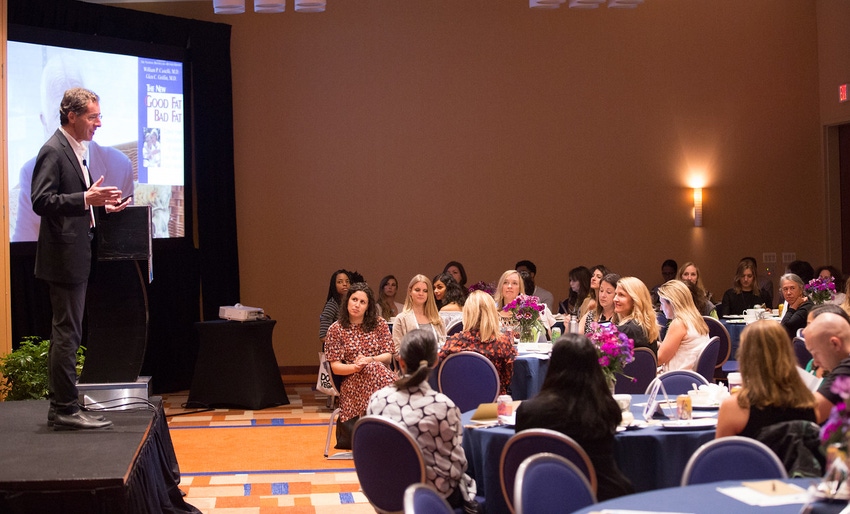These are the crucial components of an effective message, as told by the director of the Center for Climate Change Communications at George Mason University.

This year’s Natural Products Expo East 2017 had a new—and vital—session on how to change behavior through effective communications. For the first time, New Hope Network brought together 70-plus key bloggers, writers and other influencers in the natural products industry for a daylong Influencer Summit. Seven Climate Collaborative companies, including Annie’s, INFRA, Organic Valley and REBBL (and a few of us from the Climate Collaborative), were lucky enough to listen in and take notes on how the right message can enhance our impact in a big way.
Ed Maibach, professor and director of the Center for Climate Change Communications at George Mason University, provided the keynote, and was joined throughout the day by other luminaries in health and sustainability, including Climate Collaborative’s cofounder Nancy Hirshberg, who introduced Maibach, as well as Kate Geagan, Ashley Koff, Robyn O’Brien and others. We were especially lucky to be part of the day, because Maibach’s expertise has helped shape the way the Climate Collaborative defines our own communications at every level.
Maibach’s keynote had some powerful takeaways for anyone trying to change behavior among their consumers and stakeholders, which he distilled down to a few key concepts:
To spread an idea, make it simple, fun and memorable.
To change behavior, make it easy and popular
For the communications that encourage this behavior, use “simple, clear messages, repeated often, by a variety of trusted voices.”
He also shared something that we all know but that is especially hard to put into practice unless you really work hard at crafting your big idea: “The more we say, the less we are heard.” The “less is more” approach certainly helps to ensure we can implement the next practice or repetition: “People need to hear it a lot to get it ingrained in our neural pathways.”
Where have we seen these rules in practice? Maibach provided a few examples most of us are familiar with: Mothers Against Drunk Driving's “Friends don’t let friends drive drunk," AND, closer to home for our industry, Michael Pollan's "Eat food. Not too much. Mostly plants."
These messages have inspired behavior change because of their simplicity and the trusted voices reinforcing them. Maibach also shared an ineffective messaging example to drive the next two guidelines home: “If you see something, say something.”
This statement is missing specificity and emotion—two hugely important pieces in reaching your audience. Positive emotions—and messages that have a novel and surprising nature—tend to reach a wider audience and be shared more by readers.
How does this all translate to crafting messages on climate change that really hit home with the audience? Well, Maibach has done some of this work for us and shared a set of simple, powerful arguments to drive behavior change on climate:
Climate change is real (simple idea)
It’s us (actionable when we have tools to use)
Experts agree (trusted voices)
It’s bad (moral emotion)
There’s hope (arousing emotion)
We each have our own message to share. And if others share it again, it is probably a good message. While we haven’t figured it all out when it comes to climate communications, we are a few steps closer as communications experts, influencers, brands and our industry come together to tackle this and other big issues together.
Lara Dickinson is executive director of OSC2, which in partnership with Sustainable Fair Trade Association has developed the Climate Collaborative, an action plan for the natural products industry to help reverse climate change.
About the Author(s)
You May Also Like




